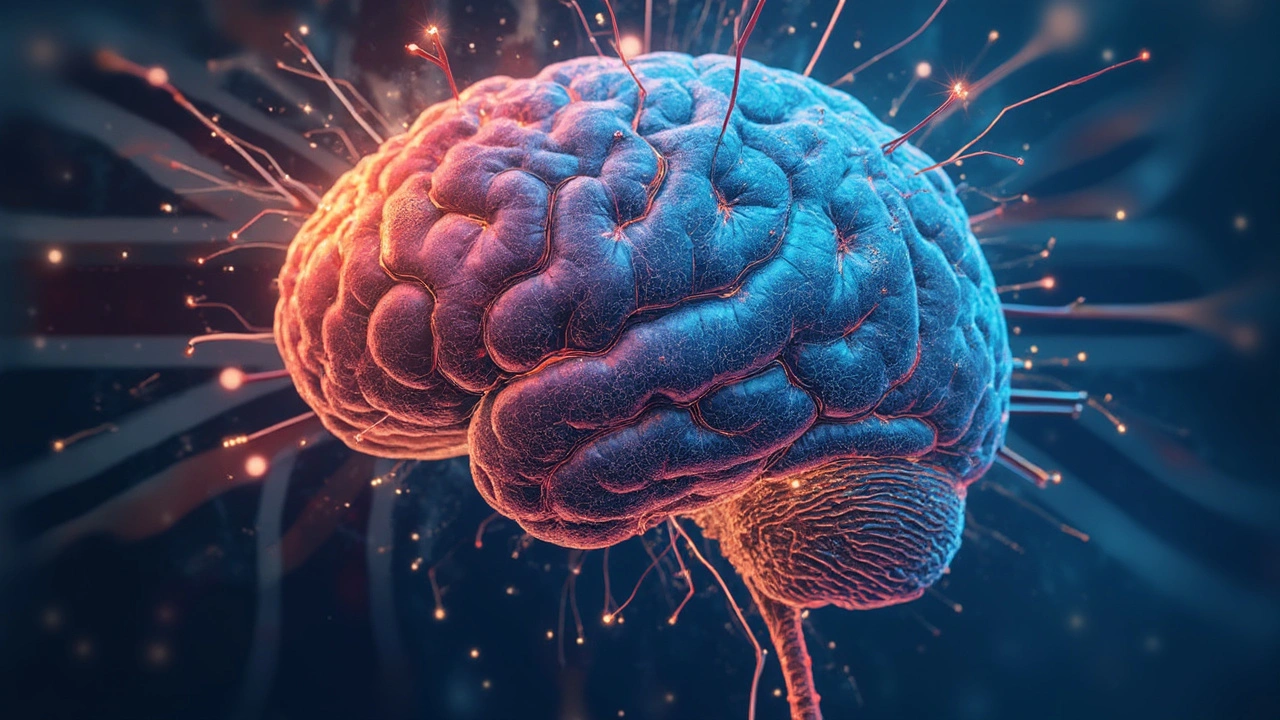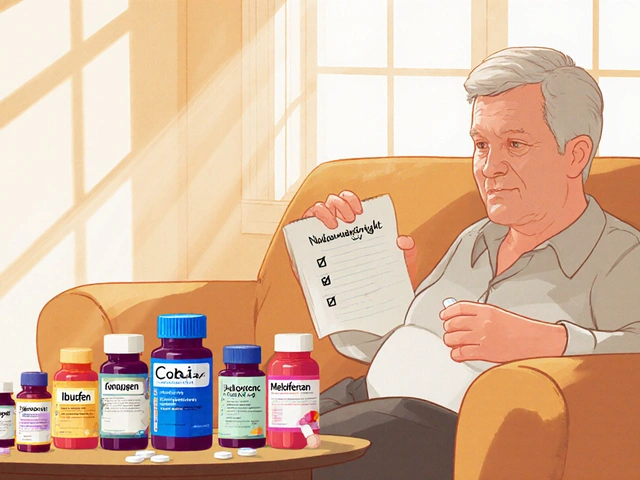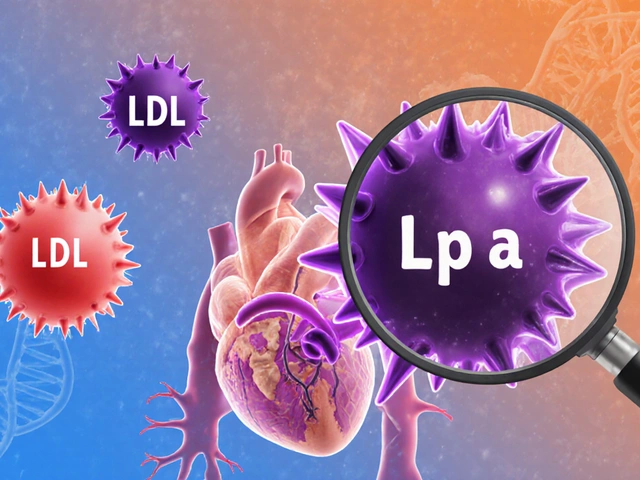Navigating the world of mental health treatments can feel like a daunting task, especially when it comes to understanding how different therapies interact. Dosulepin, an older yet trusted antidepressant, and Electroconvulsive Therapy (ECT) are often brought into the spotlight for their roles in tackling severe depression. But what happens when these two treatments meet?
Before diving into potential interactions, it's key to understand each player. Dosulepin, sometimes known by its other name Dothiepin, has been used for decades. It’s not the first pick for many doctors today, largely due to newer medications with fewer side effects. Still, it’s held in its place for those who haven't found success with other drugs.
- Understanding Dosulepin
- The Role of ECT
- Potential Interactions
- Clinical Considerations
- Patient Experiences
- Practical Tips for Patients and Doctors
Understanding Dosulepin
Dosulepin, also known as Dothiepin, is an established medication primarily used to address depression. It's an older tricyclic antidepressant (TCA) that's been around the block, offering an option especially when other treatments haven't hit the mark.
While not the first choice nowadays due to its side effect profile, Dosulepin is known for its ability to improve mood and well-being. It works by influencing the levels of neurotransmitters in the brain, namely serotonin and norepinephrine, which play a part in regulating mood.
How Dosulepin Works
Dosulepin operates by blocking the reuptake of these neurotransmitters. In simple terms, it helps keep more of these mood-boosting chemicals available in the brain, assisting in balancing mood swings and reducing feelings of depression.
Usage and Dosage
Typically, doctors recommend starting at a low dose, gradually increasing it to manage symptoms effectively while minimizing potential side effects. An average daily dose is between 75 mg to 150 mg, though some might require adjustments depending on their response and tolerance.
Side Effects to Consider
Like many medications, Dosulepin isn't without its issues. Common side effects include dry mouth, blurred vision, constipation, and sleepiness. These are generally manageable but chatting with a healthcare professional if they persist is a good move.
Interesting Fact: Though rare due to its reduced popularity, Dosulepin has been used successfully in some off-label scenarios like chronic pain conditions.
The Role of ECT
Electroconvulsive Therapy, commonly known as ECT, might sound a bit intimidating, but it's actually a well-established treatment for certain mental health conditions. Since its inception in the 1930s, ECT has undergone significant changes and now stands as a highly regulated procedure focused on safety and efficacy.
So, how does it work? ECT involves applying small electrical currents to the brain while the patient is under general anesthesia. This might sound intense, but it's important to note that patients are unconscious during the entire process and feel no pain. The electrical impulses trigger a brief controlled seizure, which can rapidly improve symptoms of severe depression and other psychiatric disorders.
When is ECT Used?
ECT is typically reserved for cases where other treatments, like antidepressants or therapy, haven't worked. It's often utilized for major depressive disorder, especially when patients experience persistent suicidal thoughts or have treatment-resistant depression. Surprisingly, it can be a life-changing option when medications like Dosulepin aren’t doing the trick.
ECT is also occasionally used for some psychotic disorders, such as severe bipolar disorder, and even catatonia, which causes people to freeze and become unresponsive. This versatility makes it a valuable tool in psychiatry's arsenal.
The ECT Process
If ECT is on the table as a treatment option, here’s what generally happens:
- You’ll be briefed on what to expect, including the benefits and potential side effects.
- Before the procedure, pre-treatment evaluations are carried out to ensure it's an appropriate step.
- During ECT, you’ll be given anesthesia for comfort, and a muscle relaxant to minimize movement.
- The procedure only lasts a few minutes, and post-treatment recovery is quick; patients usually wake up within an hour.
While there's understandable anxiety about ECT, modern advances make it a safe method for helping those with tough-to-treat mental health issues. With the right oversight and experienced professionals involved, its role can be pivotal when other treatments struggle to deliver.
| Year | Number of ECT Treatments (US) | Percentage of Improvement |
|---|---|---|
| 2020 | 100,000 | 70% |
| 2023 | 120,000 | 75% |
This handy table gives a snapshot of ECT's usage and effectiveness over the years. Although not a first-line treatment, its impact cannot be understated. The decision to undergo ECT is significant and should always be made based on a detailed discussion with healthcare providers. Realizing its potential means understanding its capabilities and when it can best serve patients’ needs.
Potential Interactions
When it comes to combining Dosulepin with ECT, there's a lot to consider. This combination isn't unheard of, but it's important to know how these treatments could play off each other. Both are powerful tools against severe depression, but their interaction isn't as straightforward as you might hope.
Pharmacological Interactions
The core of potential interactions stems from how Dosulepin works. It's a tricyclic antidepressant, and like many in its class, it affects neurotransmitter levels in the brain. Meanwhile, ECT is believed to alter brain chemistry on its own. Combining the two could amplify or diminish effects, with some studies hinting at more intense side effects. As one psychiatrist noted, "The real challenge is predicting how one treatment will influence the efficacy of the other."
"It's crucial to tailor treatments to the patient's unique needs, evaluating risks and benefits on a case-by-case basis," says Dr. Emily Rivers, a leading expert in psychiatric treatments.
Clinical Observations
In practice, some clinicians observe that patients on Dosulepin may experience improved outcomes when combined with ECT. Yet, there's a cautionary tale: adding ECT into the mix can sometimes heighten side effects like confusion and memory issues, common with both treatments alone. That's why keeping a close eye on patients undergoing this combo is vital.
Table: Common Side Effects
| Effect | Dosulepin | ECT |
|---|---|---|
| Memory Lapses | Moderate | High |
| Confusion | Low | Moderate |
| Fatigue | High | Variable |
Those considering this treatment path should have a frank discussion with their healthcare providers. Not every choice suits everyone, and when dealing with mental health, this combo requires meticulous planning and monitoring.

Clinical Considerations
When thinking about combining Dosulepin with ECT, there's quite a bit to chew on from the clinical end. First up, let's address the elephant in the room: potential interactions. While Dosulepin isn't typically the first-line medication these days, it can still pack a punch for those who need it. But mix that punch with ECT, and things might get complicated.
Balancing Benefits and Risks
The primary concern is that both Dosulepin and ECT can affect the heart. Dosulepin, part of the tricyclic antidepressants group, is known for its cardiac side effects, like altering heart rhythm. On the flip side, ECT, while generally safe, can also have cardiovascular effects during and immediately after treatment. Clinicians need to weigh the benefit of alleviating severe depression against these risks.
Monitoring for Safety
Regular monitoring becomes crucial. It's not just about writing a prescription or booking an ECT session—there's a need for frequent heart checks, possibly with ECGs, especially in the initial phases of treatment. This is crucial for catching any early signs of trouble.
Dosage Adjustments
Dosage is another tricky area. There's no one-size-fits-all answer, but doctors often start with a lower dose of Dosulepin when it's used alongside ECT, gradually adjusting as the patient's response becomes clear. This careful tweaking helps manage side effects while maximizing the treatment benefits.
Patient-Centric Approach
Finally, the patient's voice is critical in all this. Understanding their history with depression treatments, any side effects they've faced, and their overall health is part of the puzzle. Each person's experience is unique, and that shapes the approach when Dosulepin and ECT are on the table.
All these factors play into the broader clinical strategy, emphasizing personalized care and open, honest conversations between patients and clinicians to ensure the chosen path is as safe and effective as possible.
Patient Experiences
When patients face severe depression, finding the right treatment can feel like a never-ending experiment. Those who have tried both Dosulepin and ECT often have valuable insights to share. Understanding real-world experiences can help demystify these therapies for others, making journeying through mental health treatment a bit less intimidating.
Voices from the Field
For some individuals, Dosulepin has been a reliable companion. Despite its reputation for side effects, like dry mouth and drowsiness, patients who have not responded well to modern antidepressants might find it worth these drawbacks. "It’s like living with a grumpy old friend," one patient remarked, "not always pleasant, but dependable."
ECT, on the other hand, often feels like venturing into uncharted waters. One patient described it as "strange but effective," highlighting the treatment's ability to brighten their mood when medications alone didn’t cut it. Others talk about the gradual memory recovery they experienced after sessions ceased, stressing the importance of being well-informed before starting ECT.
Common Concerns
A recurring theme among patients combining these treatments is curiosity about how they intertwine. Many have reported that starting ECT while on Dosulepin required careful observation and open communication with healthcare providers. Concerns ranged from potential side effects to how each therapy's effectiveness might shift.
- Patients considering ECT are usually advised to discuss their medication regimen with their doctors extensively.
- The transition phases often require patience as their bodies adjust to simultaneous therapies.
One study highlighted by mental health professionals indicated that while combining these treatments is possible, it should be tailored to each individual's response. Though not without risks, the strategy has sometimes been a turning point in a patient's battle against deep-seated depression.
| Treatment Aspect | Common Patient Feedback |
|---|---|
| Dosulepin Usage | Effective but with side effects like drowsiness |
| ECT Experience | Initially unsettling, yet often uplifting |
Hearing from those who walked this path offers a unique perspective different from clinical reports alone. Their stories remind us of the resilience required and the relief found, often in the most unexpected combinations of treatment.
Practical Tips for Patients and Doctors
Figuring out how to mix Dosulepin with ECT can seem tricky, but some practical steps can make the process smoother for both patients and doctors. Here are some tips to help guide you.
For Patients
Understanding your treatment is half the battle. If you're prescribed Dosulepin and ECT, here are a few things to keep in mind:
- Ask Questions: Never hesitate to ask your doctor why they've chosen this combination and how it might work for you.
- Know the Side Effects: Both treatments have potential side effects. Be informed about what to look out for, whether it's unusual drowsiness or memory issues after ECT.
- Keep a Journal: Track your mood, energy levels, and any side effects daily. This information helps your doctor adjust treatments to better fit your needs.
- Communicate Openly: If something doesn't feel right, tell someone. Your healthcare provider can only help if they know what's happening.
For Doctors
Managing patients on Dosulepin and undergoing ECT requires particular attention:
- Review Medication History: Check the complete medication history to ensure Dosulepin is the best fit, especially when combined with ECT.
- Monitor Closely: Schedule regular follow-ups to monitor the patient's response to the combination therapy.
- Be Proactive with Side Effects: Address common issues like dry mouth or dizziness quickly to maintain trust and comfort.
- Collaborate: Work alongside a patient's mental health team to offer a well-rounded treatment plan.
General Facts
Combining medication and ECT isn't new to psychiatry, and data supports its use for certain cases. Still, it's crucial to navigate this path with care:
| Medication | Consideration |
|---|---|
| Dosulepin | Not first-line, but effective for some long-term users |
| ECT | Proven rapid response for severe depression cases |
In summary, successful treatment with Dosulepin and ECT involves teamwork, transparency, and clear communication between patients and their healthcare providers. Approaching treatment thoughtfully maximizes benefits and minimizes risks.







Joanne Myers
February 23, 2025 AT 03:22